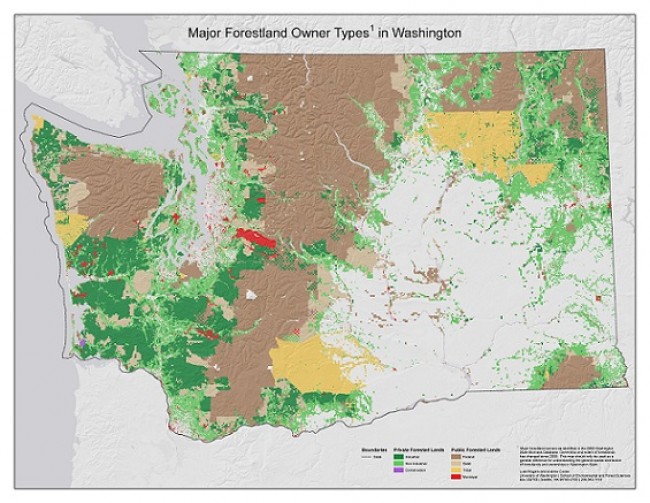WASHINGTON FOREST PROTECTION ASSOCIATION
Washington Forests
Washington boasts an array of diverse forest regions, each with its unique characteristics shaped by climate, tree species, plant life, and wildlife. These forests cover roughly half of the state’s land area, primarily west of the Cascade Mountain Range, while the rest of the state features agricultural lands, deserts, and towering mountain peaks. Urban areas have also emerged where forests once stood. With about two-thirds of Washington’s forestland under public ownership and the remainder in private hands, this diversity serves various economic, social, and environmental purposes.
About two-thirds of Washington’s forestland is publicly owned, while the remaining one-third is privately owned. Federal forests are brown, State Department of Natural Resources land is tan and municipal forestland is red. The balance of owners, tribal lands are golden, private land is dark green, family forest landowners are light green, and conservation ownership is purple. This diversity allows Washington’s forests to fulfill many economic, social, and environmental needs. Washington’s forest land ownership has evolved over the years. New structures have developed in response to changes to pension and income tax law changes, including Timberland Investment Management Organizations (TIMOs), and Real Estate Investment Trusts (REITs). Click here for the Changing Nature of Forest Landownership.
WASHINGTON’S FOUR DIVERSE FOREST REGIONS
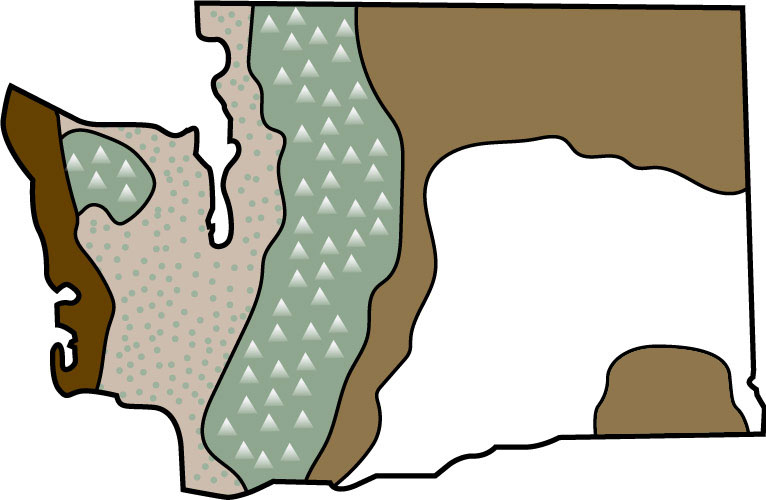
Washington can be divided into four forest regions: Coastal, Lowland, Mountain, and Eastside. Each region is characterized by different growing conditions, climate, tree species, plant life and animals, and can encompass many different kinds of habitats.
COASTAL FOREST REGION
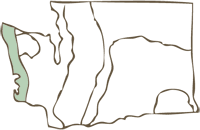
Located along the western coast of Washington, extending north to Alaska and south to northern California, this low-elevation region enjoys mild temperatures and abundant rainfall, with an average of 130 inches annually. The Pacific Ocean’s influence generates summer fog, adding moisture even when it’s not raining. Tree species like Sitka spruce, western red cedar, and western hemlock thrive in this wet environment, while Douglas-fir prevails in drier areas on slopes.
LOWLAND FOREST REGION
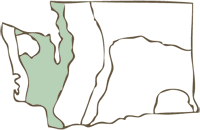
Stretching from the coastal region to the base of the Cascade Mountain slopes, the Lowland Forest Region is Washington’s largest forested area. It receives over 70 inches of annual rainfall and features mild temperatures, making it ideal for various tree species, including Douglas-fir, western hemlock, and western red cedar. Much of this region has been harvested, resulting in second- and third-growth forests.
MOUNTAIN FOREST REGION

Beginning at 2,500 feet elevation and reaching up to 7,000 feet, the Mountain Forest Region encompasses areas near the Olympic and Cascade Mountains. It offers diverse habitats and growing conditions due to varying elevations. Lower elevations feature dense evergreen stands, while higher elevations have fewer trees due to cold temperatures, short growing seasons, and thin soil. Tree species vary, with Douglas-fir, western hemlock, and others in the western elevations, and lodgepole pine, ponderosa pine, grand fir, and western larch in the mid-elevations of the eastern Cascades.
EASTSIDE FOREST REGION
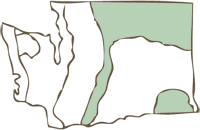
Recognizable by ponderosa pine trees, the Eastside forest region begins around 1,800 feet elevation, with concentrations of ponderosa pine stands rising to 3,200 feet. This region covers northeastern Washington, including the Okanogan Highlands, Ferry, Stevens, and Pend Oreille counties, parts of the Cascade Mountains’ eastern side, and the Blue Mountains in southeast Washington. Characterized by dry and arid conditions with low rainfall (6 to 20 inches annually) and extreme temperature fluctuations, this region is home to hardy plant life, primarily dominated by ponderosa pine. Other species like lodgepole pine, Douglas-fir, western larch, and western white pine also thrive in these challenging conditions.
Washington’s diverse forest regions play vital roles in the state’s ecosystem and provide resources for various industries. Understanding their unique characteristics is essential for sustainable management and conservation efforts.
Learn more about the most common tree species in Washington’s forests.
